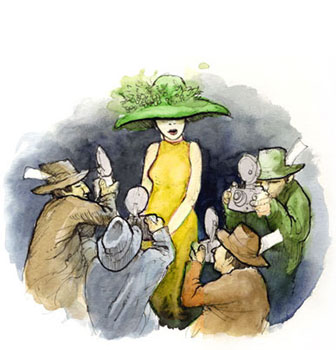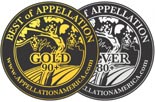
 Cayuga was the first individual lake of the Finger Lakes to earn its own AVA stripes back in 1988. The region’s wineries were also the first in the state to collaborate into a mutually beneficial promotional organization - the Cayuga Wine Trail. Forty miles long, Cayuga is the longest of New York State’s Finger Lakes. Vineyards on mainly shale soils are concentrated on the western side of this deep glacial lake. With their eastern exposures, vineyards bathe in early morning sunshine, helping to ripen their grapes in this northern, cool-climate region. Vineyard elevations never exceed 800 feet above the lake’s surface and steep slopes run down to its shore, facilitating air patterns that create a unique microclimate in autumn. At that time, cold air drains off the vineyards onto the lake, where it warms and rises, creating the vacuum which draws more cold air from the land. This continuous air flow prevents cold pockets from settling and forming frost on the vineyards, extending the growing season to 165-170 days on average, which is three weeks longer than many other areas in the Finger Lakes region. The popular Cayuga grape variety was developed locally at Cornell University and today is an important part of the varietal mix of this and many other cold-climate regions. Perhaps the marquee wines of the Cayuga appellation are its excellent Rieslings, but increasingly, Cabernet Franc is proving well suited to the local conditions.
Cayuga was the first individual lake of the Finger Lakes to earn its own AVA stripes back in 1988. The region’s wineries were also the first in the state to collaborate into a mutually beneficial promotional organization - the Cayuga Wine Trail. Forty miles long, Cayuga is the longest of New York State’s Finger Lakes. Vineyards on mainly shale soils are concentrated on the western side of this deep glacial lake. With their eastern exposures, vineyards bathe in early morning sunshine, helping to ripen their grapes in this northern, cool-climate region. Vineyard elevations never exceed 800 feet above the lake’s surface and steep slopes run down to its shore, facilitating air patterns that create a unique microclimate in autumn. At that time, cold air drains off the vineyards onto the lake, where it warms and rises, creating the vacuum which draws more cold air from the land. This continuous air flow prevents cold pockets from settling and forming frost on the vineyards, extending the growing season to 165-170 days on average, which is three weeks longer than many other areas in the Finger Lakes region. The popular Cayuga grape variety was developed locally at Cornell University and today is an important part of the varietal mix of this and many other cold-climate regions. Perhaps the marquee wines of the Cayuga appellation are its excellent Rieslings, but increasingly, Cabernet Franc is proving well suited to the local conditions.
|
|
Current Feature
In the southern Blue Ridge Mountains of North Carolina and Georgia vineyards are small and few, yet the establishment of the Upper Hiwassee Highlands could bring much more.
[>] continue
Appellation Features
[>] see all Cayuga Lake features (1)
Related Features
Best of Appellation
See the best wines of
Cayuga Lake
BLUE BOOK PROFILES
Blue Book Taste Profiles for the Cayuga Lake AVA
Alive & Well here

Chardonnay:
You are the world’s greatest star. Your fame has infiltrated every nook and cranny of the globe, regardless
[>] continue



 Bi-State Upper Hiwassee Highlands an AVA
Bi-State Upper Hiwassee Highlands an AVA  King Ferry Winery:
King Ferry Winery:  Remote Manton Valley New California AVA
Remote Manton Valley New California AVA WAWGG Banquet Explores Washington State Terrior
WAWGG Banquet Explores Washington State Terrior Taking Focus on Appellation
Taking Focus on Appellation Whitehall Lane Winery, A 20 Year Story of Vineyards
Whitehall Lane Winery, A 20 Year Story of Vineyards Embracing Virginia’s Terroir
Embracing Virginia’s Terroir  Appellation America to Drop Paywall - Provide Open Access
Appellation America to Drop Paywall - Provide Open Access Shake Ridge Ranch - Gem of the Sierra
Shake Ridge Ranch - Gem of the Sierra
